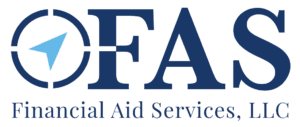Beyond the Checklist: Building a Culture of Audit Readiness
With federal oversight increasing, Title IV guidance evolving, and Return to Title IV (R2T4) updates drawing sharper scrutiny, audit readiness can no longer be treated as a once-a-year event. The institutions that will emerge stronger are those treating compliance as a daily discipline—and building it into the rhythm of their operations.
Why It’s Time to Shift from Reactive to Ready
In 2025, compliance isn’t a static checklist—it’s a moving target. Presentations at NASFAA 2025 and recent federal updates all point to increased oversight in areas like satisfactory academic progress (SAP), professional judgment, and data-sharing protocols. At the same time, financial aid teams are navigating staffing shortages, technology transitions, and unclear ISIR timelines—making it easy for compliance to slip into “reactive mode.” But here’s what we’re seeing: the institutions that build a culture of audit readiness aren’t just surviving—they’re gaining trust, efficiency, and long-term resilience.
Additional Reading from FAS:
Is your institution preparing for a program review? Don’t miss this blog, “I Will Survive a Program Review” which covers lessons learned, practical tips, and advice you can apply today.
Culture Is the Carrying Force for Compliance Readiness
Whether you’re scaling a million-dollar tech startup and need to spark innovation, or leading a higher ed institution preparing for an audit, success isn’t just about the strategy—it’s about the culture that carries it.
Healthy cultures that support audit readiness are rooted in:
- Shared Purpose
- Clarity of Roles and Expectations
- Accountability
- Trust and Transparency
What That Looks Like in Practice
In our consulting work, we’ve seen that the most successful institutions aren’t the ones with the largest teams—they’re the ones that encourage and reinforce shared responsibility. Below, we have outlined the key components to consider when you work on building (or rebuilding) a compliance-ready culture.
Quarterly Self-Audits
Instead of waiting for year-end audits, pull a random sample of files throughout the year. Vary aid types, student scenarios, and program categories. This isn’t just to flag issues—it gives your team practice operating under audit-like conditions.
Shared Responsibility Across Teams
Compliance isn’t a one-person or one-department job. Successful institutions define clear roles, document their processes, and foster shared ownership. You may have a designated audit liaison, but that individual should be backed by a well-prepared and aligned team.
Documentation That Enables Action
When core processes rely on institutional memory or outdated guides, transitions become risky. Leading institutions are investing in documentation that is actively maintained and easy to follow—so staff can act quickly and confidently.
Allocated Budget for Upgrades
It’s easy to say no to compliance investments—especially in tight budget cycles. But when the team has done the groundwork, funding becomes less of a cost discussion and more of an outcome and impact discussion.
Live Compliance Dashboards
From R2T4 calculations to SAP alerts, forward-thinking teams are building dashboards that offer real-time visibility. These tools turn reactive problem-solving into proactive monitoring—and help leadership stay informed without getting into the weeds.
The Case for Building it into Institutional Culture
When audit prep is built into your rhythm—not rushed when the deadline hits—you avoid:
- Costly errors that jeopardize Title IV eligibility
- Institutional reputation risks
- Strained team dynamics and last-minute stress
And you gain:
- Clearer decision-making
- Leadership confidence
- A more resilient operation overall
Audit Readiness is a Muscle, not a Moment
The campuses we support that perform best during audits don’t wait for the deadline. They’ve built compliance into the rhythm of their operations. If your team hasn’t updated its compliance documentation, R2T4 procedures, or audit prep strategy in the last six months—it’s time. Reach out to FAS and strengthen your compliance foundation—before the next audit cycle begins.



